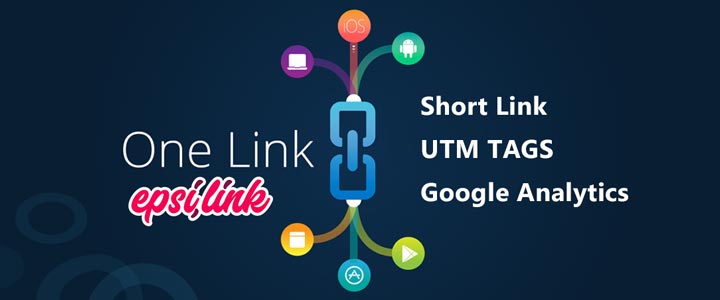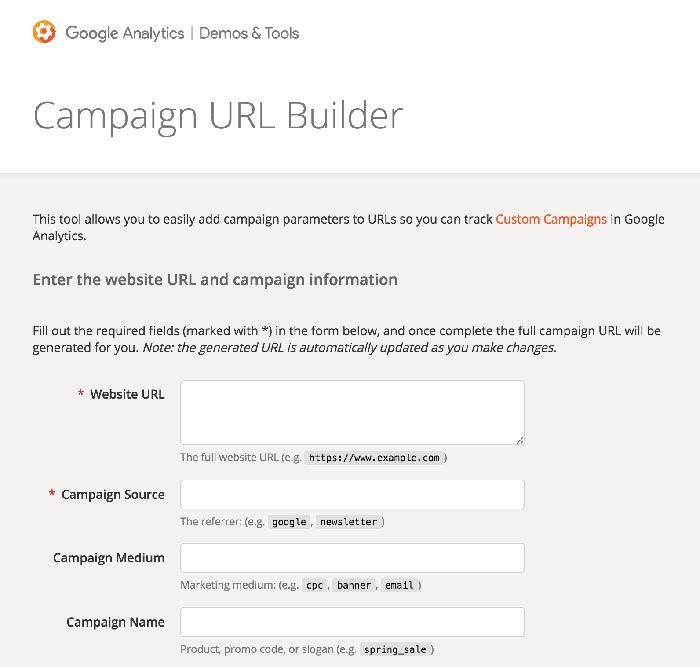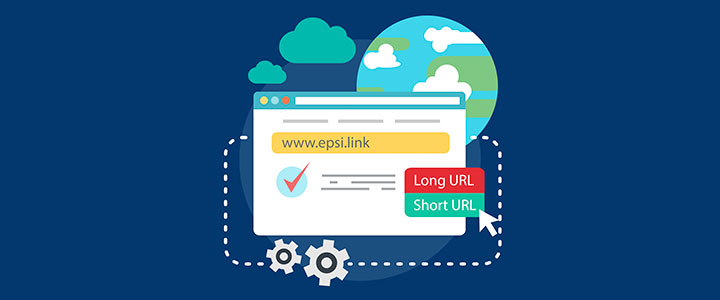
You can utilize the UTM manufacturer element to make your UTM boundaries.
How can I shorten a link with UTM tags?
Nowadays, because it is very common to monitor links, it is very important to analyze the short links that are created by Epsi.link, and the good news is that this is also possible in the case of UTM TAG, and you can create short links of these types of links.
The Epsi link shortener site works like a UTM tag and in addition to shortening your link, it provides the possibility of monitoring the link and complete analysis of the address of the site you are looking for.
Read more about the features of Epsi short link
you can utilize the UTM manufacturer element to consequently really make your UTM boundaries.
You can create different campaigns on the Epsi site and by creating short links you can check all campaign performance, site traffic, and other things.
To shorten a link with UTM tags, you can use a URL shortening tool that supports UTM tags.
Here's how you can do it:
- Start by creating your UTM parameters using Google's Campaign URL Builder or any other UTM builder of your choice.
- Once you have created your UTM parameters, copy the URL to that you want to add UTM tags.
- Go to a URL shortening tool such as bit.ly, TinyURL, Rebrandly, or any other URL shortening service of your choice.
- Paste the long URL into the URL shortening tool's text box.
- Add your UTM parameters to the URL. Make sure that you add a question mark "?" before the first UTM parameter and use an ampersand "&" to separate each UTM parameter.
- Shorten the URL by clicking on the shorten button provided by the URL shortening tool.
- Copy the shortened URL that has UTM tags attached to it.
Your shortened URL with UTM tags is now ready to use. When someone clicks on this URL, the UTM parameters will be sent to Google Analytics, and you will be able to track the source, medium, and campaign name of the traffic that comes from this link.
What is a UTM tag?
UTM (Urchin Tracking Module) tags are codes added to URLs to track the source, medium, and campaign name of traffic to a website. UTM tags allow website owners to track which marketing campaigns and channels are driving traffic to their website, as well as to see how users behave once they arrive on the site.
UTM tags consist of parameters that are added to the end of a URL, following a question mark (?). The parameters include:
- utm_source: identifies the source of the traffic, such as a search engine or social media platform.
- utm_medium: identifies the medium through which the traffic is coming, such as email, organic search, or CPC (cost per click) advertising.
- utm_campaign: identifies the specific marketing campaign that the traffic is associated with, such as a product launch or holiday promotion.
- utm_term: identifies the specific keyword that triggered the ad or link.
- utm_content: identifies the specific piece of content that the link is associated with, such as a banner ad or text link.
By using UTM tags, website owners can more accurately measure the effectiveness of their marketing campaigns and make data-driven decisions about how to allocate their resources.
UTM codes are text strings that are added to the ideal URL and the site supervisor can follow their traffic because of the UTM link.
By using the UTM link, you make sure that your data is displayed in the preview section of Google Analytics.
UTM allows you to monitor your site's traffic with the help of Google Analytics and even know the cause of this traffic and which page has the most traffic.
UTM stands for Urchin Tracking Module, which belonged to the urchin company, which was bought by Google in 2005, and this software later created Google Analytics.

Why should we use UTM in our links?
Considering that the activity in social networks has increased and the costs spent on different campaigns must be managed, it is necessary to control the landing pages more carefully. With UTM, we can have a more detailed review of each link created.
As you know, there are cookies in Google that come to links and monitor incoming traffic, now by activating UTM, we can customize this review more precisely.
There are several reasons why you should use UTM tags in your links:
- Track the effectiveness of your campaigns: By using UTM tags, you can track the performance of your marketing campaigns in Google Analytics. This allows you to see which campaigns are driving the most traffic to your website, which channels are performing the best, and which campaigns are resulting in the highest conversions.
- Identify your most valuable channels: UTM tags can help you identify which channels are the most valuable to your business. For example, you might find that your social media campaigns are driving a lot of traffic to your website, but that your email campaigns are resulting in the highest conversion rates. This information can help you make data-driven decisions about where to focus your marketing efforts.
- Measure the impact of specific campaigns: UTM tags allow you to track the performance of specific campaigns, such as a product launch or a seasonal promotion. This can help you determine the ROI of each campaign and make informed decisions about future campaigns.
- Optimize your campaigns: UTM tags can help you optimize your campaigns by providing you with data on how users are interacting with your website. For example, if you find that users are spending more time on your website after clicking on a specific campaign, you can use this information to optimize your landing pages and improve your conversion rates.
Overall, using UTM tags can help you gain insights into your website traffic and make data-driven decisions about your marketing efforts. It can help you understand your audience better, improve your campaigns, and increase your conversions.
UTM features achievement:
- Where is the source of incoming traffic from?
- Which of your campaigns contributed to more entries?
- Which route was used to reach you?
- Which keywords were more useful and better?
- On which page users clicked and visited the most
Essential UTM codes are divided into three parts:
- Source, which monitors the source of site traffic.
- Medium, which helps you to understand where and what media your incoming traffic came from.
- Campaign, which helps you to accurately understand which campaign the incoming traffic came from among the other campaigns you have.
Also, you can use some UTMs as you wish, such as Content, which helps you monitor your attractive texts that have the most feedback & TERM which focuses on your target keywords.
In what sectors are UTMs used the most?
Of course, social networks are one of the most important parts that we can include the relevant link in our profile by using UTM on our site's landing page.
The use of UTM in email marketing is also common and with this method, we can monitor how much traffic was from email marketing.
UTM is also very useful for monitoring banners and online ads.
UTM tags are used in various sectors to track the effectiveness of their digital marketing campaigns.
Here are some of the sectors where UTMs are used the most:
- E-commerce: E-commerce businesses use UTMs extensively to track the performance of their various marketing campaigns across channels, such as social media, email, paid to advertise, and more. By tracking the performance of their campaigns, they can optimize their marketing efforts and improve their ROI.
- Digital Advertising: Digital advertising agencies use UTMs to track the effectiveness of their ad campaigns across different platforms, such as Google Ads, Facebook Ads, LinkedIn Ads, and more. They can also track the performance of specific ads and optimize them for better performance.
- Content Marketing: Content marketers use UTMs to track the performance of their content marketing efforts across channels, such as social media, email, and more. They can track the performance of individual pieces of content and optimize them for better engagement and conversions.
- Non-profits: Non-profit organizations use UTMs to track the effectiveness of their fundraising campaigns, event promotions, and other marketing efforts. By tracking the performance of their campaigns, they can optimize their marketing efforts and increase their donations and volunteer engagement.
- Higher Education: Universities and colleges use UTMs to track the effectiveness of their various digital marketing campaigns across channels, such as social media, email, and paid advertising. They can also track the performance of specific campaigns for admissions, fundraising, and more.
In summary, UTMs are used in a variety of sectors to track the effectiveness of digital marketing campaigns across channels and platforms.
How to use UTM codes in link building?
In this section, we will examine the UTM coding method, although, at the beginning of the article, we mentioned the EPSI.LINK site, which you can easily check your site's performance by creating a short link.
There are online tools that can easily and automatically create UTM links. For example: Use Campaign URL Builder or URL Builder in Google Analytics.

Then it is enough in the Google Analytics management panel in the path:
Go to: Acquisition > Campaigns > All Campaigns.

So that you can have full monitoring of the UTM setup.
Using UTM codes in link building can help you track the effectiveness of your link-building campaigns and understand which links are driving the most traffic to your website. Here are the steps to use UTM codes in your link-building efforts:
- Create UTM codes: Use Google's Campaign URL Builder or any other UTM builder to create UTM codes for each link that you want to track. Make sure to use descriptive names for each parameter to help you identify the source of the traffic.
- Add UTM codes to your links: Once you have created your UTM codes, add them to the links that you are building. You can add UTM codes to guest posts, forum comments, social media profiles, and other types of links. Make sure to use the correct UTM code for each link to ensure accurate tracking.
- Track your links: Use Google Analytics or any other analytics tool to track the performance of your links. You can use the UTM parameters to see which links are driving the most traffic to your website, which links are resulting in the highest conversions, and which links are performing the best across different channels.
- Optimize your link-building strategy: Use the data from your UTM tracking to optimize your link-building strategy. Identify the links that are performing the best and focus your efforts on building more links from similar sources. Identify the links that are not performing well and consider removing or replacing them.
By using UTM codes in your link-building efforts, you can track the effectiveness of your campaigns and optimize your strategy for better results. UTM codes can also help you identify the most valuable sources of traffic and focus your efforts on building more links from those sources.



